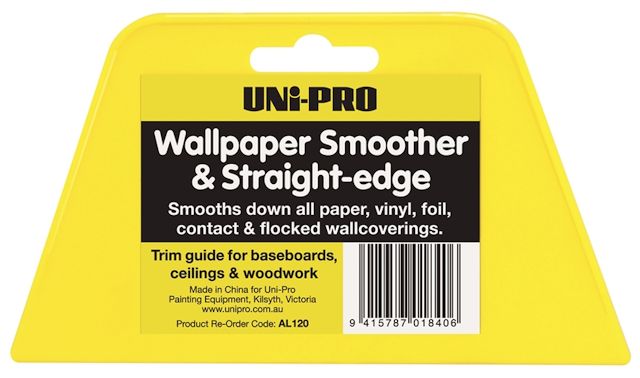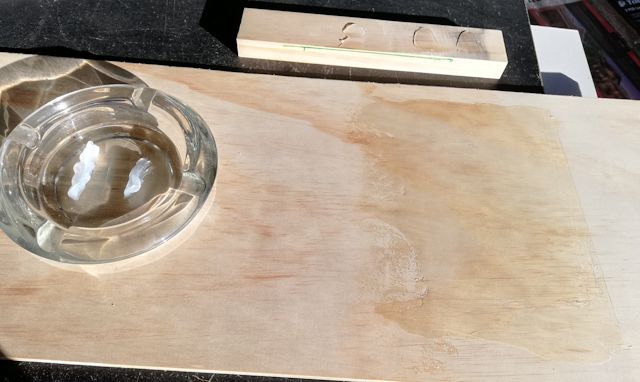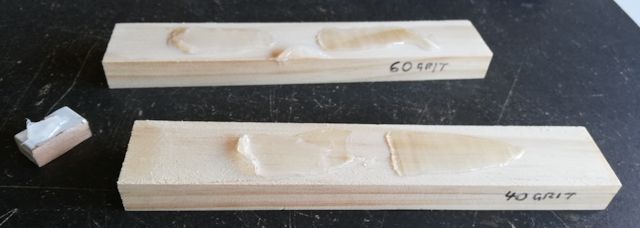Testing bonding of Selleys 401 silicone sealant
I am gradually building up expertise with using suitable materials and construction techniques for the solar water distiller.
Prototype #1 is just about ready to have the glass put on top. It has
been a winding road getting to this point. The objective is that I will
publish a set of plans, for anyone to DIY. The final design needs to be
very simple, and prototype #2 might be it.
With the first prototype, I made an assumption that turned out to be
false. I had read in various places online, that silicone sealant will
stick better to wood if it is first primed -- well maybe, but the
product I chose had the opposite effect.
Prototype #1 is built with premium plywood base and pine sides, and I
coated it with Dulux Duramax primer/undercoat (spray can). Purchased
from Bunnings:
https://www.bunnings.com.au/dulux-duramax-340g-undercoat-spray-paint_p1400722
Adhesion of the Selleys 401 silicone sealant is very poor, I can
scrape it off with my fingernail. Surprisingly, adhesion to aluminium
sheet is also poor, and again I could scrape it off with my fingernail.
This sealant is acidic-curing, and I expected it to bond well to
aluminium. Need to do some testing on different surfaces!
Spreading of silicone sealant
prototype #1 has an aluminium sheet on top of the plywood, and the
black wicking cloth goes on top of the aluminium sheet. I did consider
coating the plywood with silicone sealant, and put the wicking cloth
directly on that, no aluminium sheet, however, was not confident of
being able to spread the sealant evenly over the large plywood surface.
Another experiment was required. I found something at Bunnings that looked like it might do the job:
https://www.bunnings.com.au/uni-pro-wallpaper-smoother-and-straight-edge_p1661659

Hey, it works beautifully, was able to spread the sealant thinly over
a test piece of plywood. Note that the edge is not sharp, it is
rounded, which is I think the key to the nice spreading.
Wood and glass substrates
This photo shows the next experiment, putting the sealant onto various surfaces:

On the left is an old glass ashtray, two deposits of sealant, on the
left first smeared margarine, on the right applied the sealant directly
to the glass.
At the top is a piece of radiata pine, with sealant applied, from the
left: to the wood, a small amount of coarse sanding (across the grain)
and a small amount of fine sanding.
On the plywood, used the wallpaper smoother to apply the sealant. Then waited a couple of days.
Test results
The margarine on glass worked, the sealant did not adhere at all.
Probably there are many greases that would have the same effect,
including spray-on types.
Direct to the glass -- oh wow, it sure did bond. I guess that it is
the acidic curing that achieves such a superb bond. Was unable to lift
the silicone, without tearing it.
The radiata pine, bonding is good, but still able to lift it, with
some effort. Sandpapering might have improved the bonding slightly.
Being acidic-curing does not do anything with wood, and neutral-curing
would be just as good, I think. Bonding takes place by the sealant
getting into the tiny grooves on the surface of the wood.
On the plywood, adhesion is the same as for the pine. Well, it is the
same type of wood. Adhesion is good, sufficient I think to do this for
prototype #2.
However, for the second prototype, I am thinking of using MDF (Medium
density Fibreboard), rather than pine, partly because it is cheaper.
There are many grades of MDF, some premium types are water resistant.
Bunnings site does not say, but it is probably a cheap type. But that's
OK, the MDF will not be getting wet. I bought this:
https://www.bunnings.com.au/16mm-standard-mdf-600mm-x-900mm_p0590044
Today, applied the silicone sealant over a small area of the board,
will let it cure for a couple of days. Not sure what to expect, as the
surface is finer-grained that the plywood.
EDIT 2019-05-26:
Wow, the sealant bonds to MDF extremely well. Unlike the pine, it would
not lift off, I had to use a spatula and virtually grind it off in tiny
pieces. Although the MDF surface looks smooth, it does have tiny pores,
which are obviously providing good purchase for the sealant.
Note, this good bonding may not apply to all types of MDF, as some have a wax coating for water resistance.
EDIT 2019-05-29:
As adherence of the silicone sealant to pine was mediocre, I conducted a
further test, sandpapering the surface, with 60-grip (coarse) and
40grit (very coarse) sandpaper:

...no discernible improvement over non-sandpapered surface, it is sticky onto the pine, but fairly easy to peal off.
EDIT 2019-0530:
More bonding testing here:
http://bkhome.org/news/201905/silicone-on-silicone-and-silicone-on-pine.html
Tags: nomad
